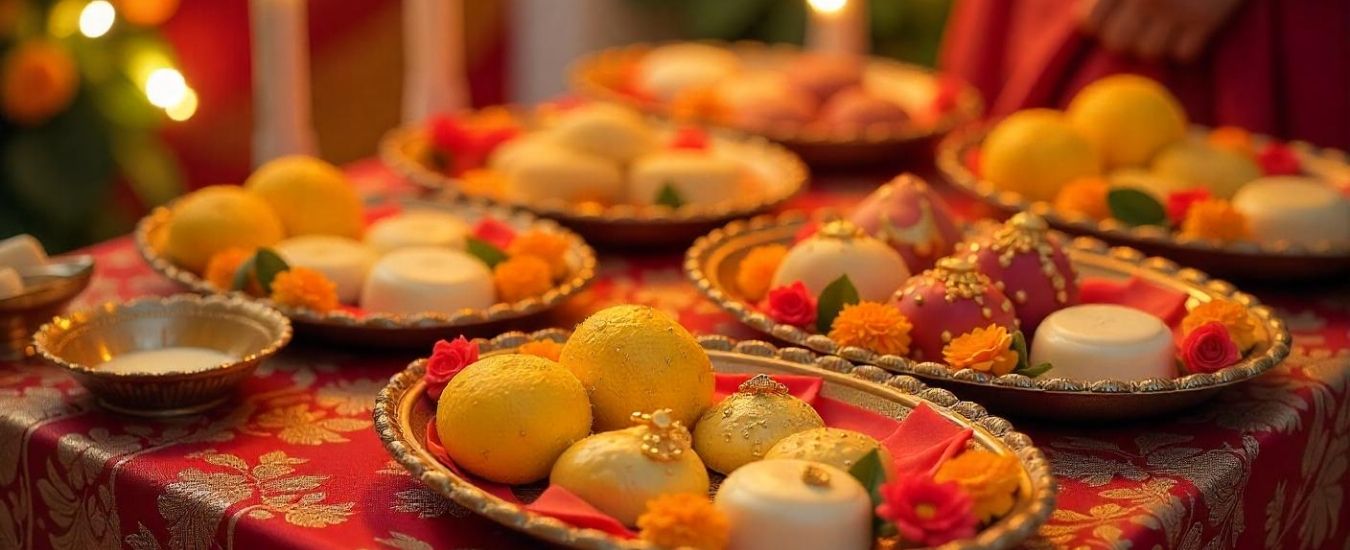A Bengali tattoo isn’t just a tradition—it’s a canvas of love, painted with rituals, colours, and creativity. Whether you keep it minimalist or go for a grand Indian wedding theme, let your tatta trays speak of your story, your family, and your culture.
Tradition meets trend, and elegance meets emotion.
Weddings in India, especially Bengali weddings, are a colorful fusion of rituals, emotions, and artistic traditions. One such heartwarming ritual is the Tatta exchange, a practice that blends cultural symbolism with creative gifting.
What is “Tatta” in Bengali Weddings?
Tatta refers to the ceremonial exchange of gifts between the bride’s and groom’s families during key wedding events. This age-old custom is more than a formality—it’s a symbolic celebration of union, love, and shared heritage.
The Cultural Significance of Tatta in Bengali Weddings
In Bengali culture, the Tatta represents mutual respect, familial bonding, and auspicious blessings. Be it silk sarees, traditional sweets, or customized accessories; each item is carefully curated to convey goodwill.
When and How is Tatta Exchanged?
Tatta trays are exchanged during:
- Aiburobhat (bride/groom’s last meal as a bachelor)
- Gaye Holud (turmeric ceremony)
- Wedding Day Rituals
The trays are usually arranged by close relatives who infuse love and cultural aesthetics into every detail.
Traditional Items in Bengali Wedding Tatta Decoration
Typical items include:
- Sarees (often silk or kantha-embroidered)
- Jewellery (gold, imitation, or terracotta jewellery)
- Sweets like Sandesh, Rasgulla
- Sindoor, betel leaves, turmeric
- Fish—especially decorated hilsa
- Brass utensils, organic cosmetics
- Red and white bangles (Shankha Pola)
Each item reflects symbolism, such as prosperity, sweetness, fertility, and purity.
Traditional Packaging and Decorative Materials
Earlier, items were presented in cane baskets or wooden trays lined with embroidered red or white cloth. Decorations included:
- Alpana patterns (folk floor art)
- Banana leaves, shola flowers
- Mirrorwork, handmade paper tags
- Natural dyes and cotton wraps
Modern & Eco-Friendly Tatta Presentation
With evolving trends, tatta trays now blend sustainability and contemporary aesthetics:
- Jute baskets, fabric wraps
- Satin-lined boxes, acrylic tags
- LED fairy lights, tiered hampers
- Recycled materials like cardboard with kantha patchwork
- Reusable cloth bags with block print
Personalized and Thematic Tatta Trays
Add a personal touch using:
- Initials or full names on wooden tags
- Laser-cut labels or mirror acrylics
- Themes like:
- Royal: velvet, crystals, silk tassels
- Rustic: burlap, terracotta pots, wood tones
- Floral: petal trays, fresh marigold garlands
Budget-Friendly DIY Tatta Tray Ideas
You don’t need a huge budget to create magic:
- Cardboard trays covered in old sarees
- Hand-drawn alpana motifs
- Use leftover Diwali lights
- Label trays with calligraphy or chalkboard tags
It’s about the love, not the price tag.
Difference Between Bride & Groom Side Tatta
Each family customizes tatta according to traditions:
- Bride’s side: sarees, jewellery, sweets, cosmetics, shankha pola
- Groom’s side: sherwanis, perfumes, watches, homeware items, coconuts
Regional nuances and family values influence each inclusion.
Tips for an Eye-Catching Tatta Display
- Use tiered heights with stools
- Group by type: cosmetics, clothes, sweets
- Add floral borders or LED lining
- Stick to a colour palette: pastel or bold ethnic tones
- Use eco-friendly crafts like palm leaf trays or terracotta diya holders
Hiring a Tatta Decorator vs DIY
DIY works for small, intimate events. But for grandeur:
- Hire decorators who offer:
- Custom themes
- Eco-packaging
- Transport-safe trays
- Experience with ethnic wedding setups
Mistakes to Avoid
- Avoid overloading trays—they could collapse.
- Keep sweets insulated to prevent melting.
- Don’t forget personalization—it sets the tone.
- Always label fragile items and test the layout before the big day.
FAQs
What does tatta include in a Bengali wedding?
Sarees, sweets, jewellery, sindoor, betel leaves, hilsa fish, cosmetics, utensils, and symbolic items.
When is tatta exchanged?
During Aiburobhat, Gaye Holud, and wedding day rituals.
Can I create my tatta trays?
Yes! With creativity, household items, and traditional decor, DIY is possible and meaningful.
What makes a tattoo display eco-friendly?
Jute trays, handmade paper tags, reusable cloth wraps, and avoiding thermocol or plastic.
Are themed tatta trays common?
Absolutely! From rustic to royal, personalized themes are trending across urban Bengali weddings.
